Abstract
Soon after its entry into the Indo-Pakistan subcontinent in 1964, cholera El Tor progressively replaced classical cholera. One of the probable reasons for this was found from laboratory studies of the interaction of the two choleragenic vibrios, V. cholerae and V. El Tor. It was observed, in both in vitro and in vivo experiments, that in mixed culture El Tor vibrios from cholera cases are capable of outgrowing and rapidly eliminating V. cholerae. The apathogenic El Tor strains from the Middle East countries differed significantly from the pathogenic type of El Tor strains isolated from cholera cases in that the former did not inhibit the growth of V. cholerae strains. The possible mechanism of interaction of the pathogenic El Tor vibrios and V. cholerae was studied in detail. Various possibilities, including higher rates of multiplication of El Tor vibrios, competition for nutrients, secretion of inhibitory substances and liberation of lethal bacteriophage or vibriocins by El Tor vibrios, were examined. Although it was not possible to establish the actual mechanism of this interaction, the possible biological effect on the epidemiology of cholera was evident.
Full text
PDF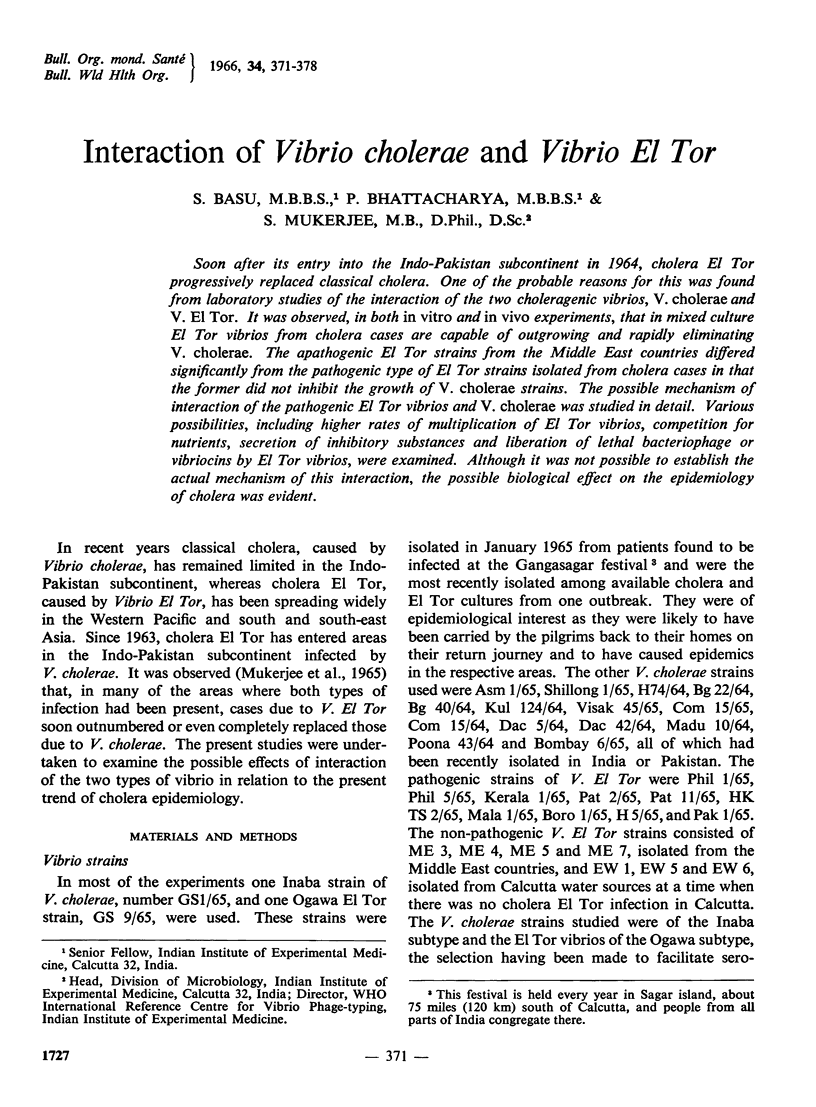
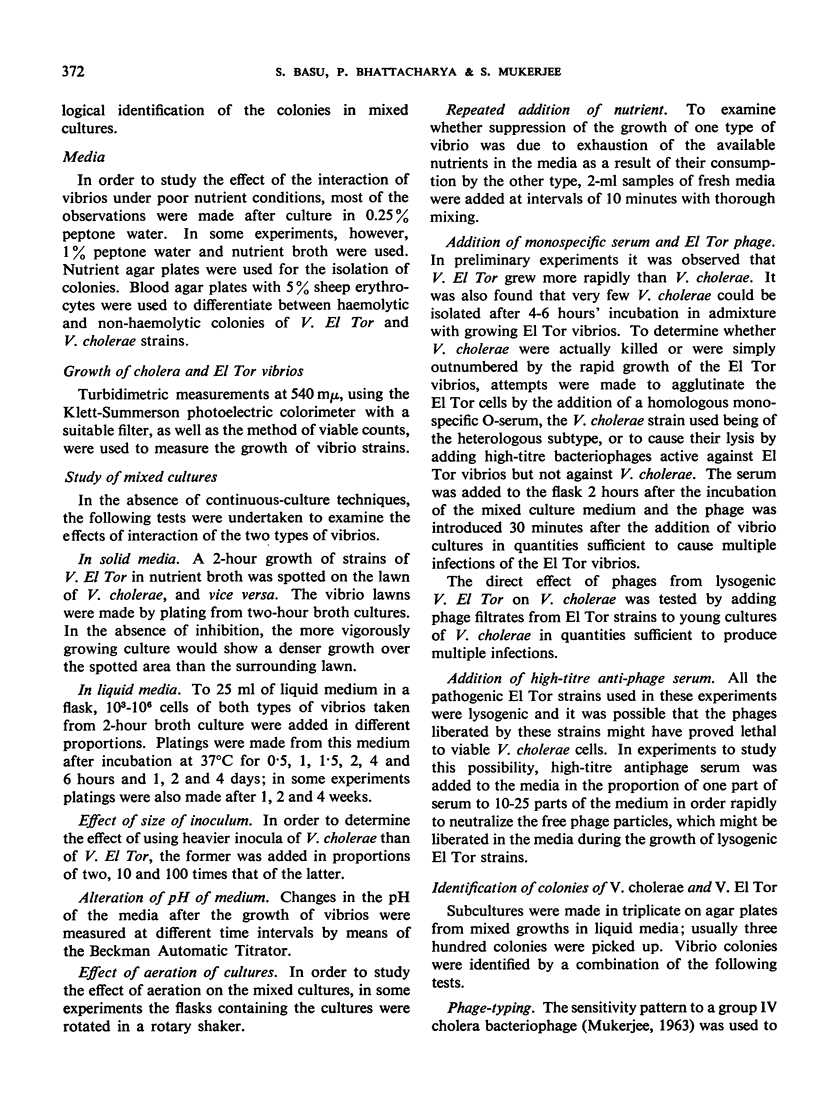
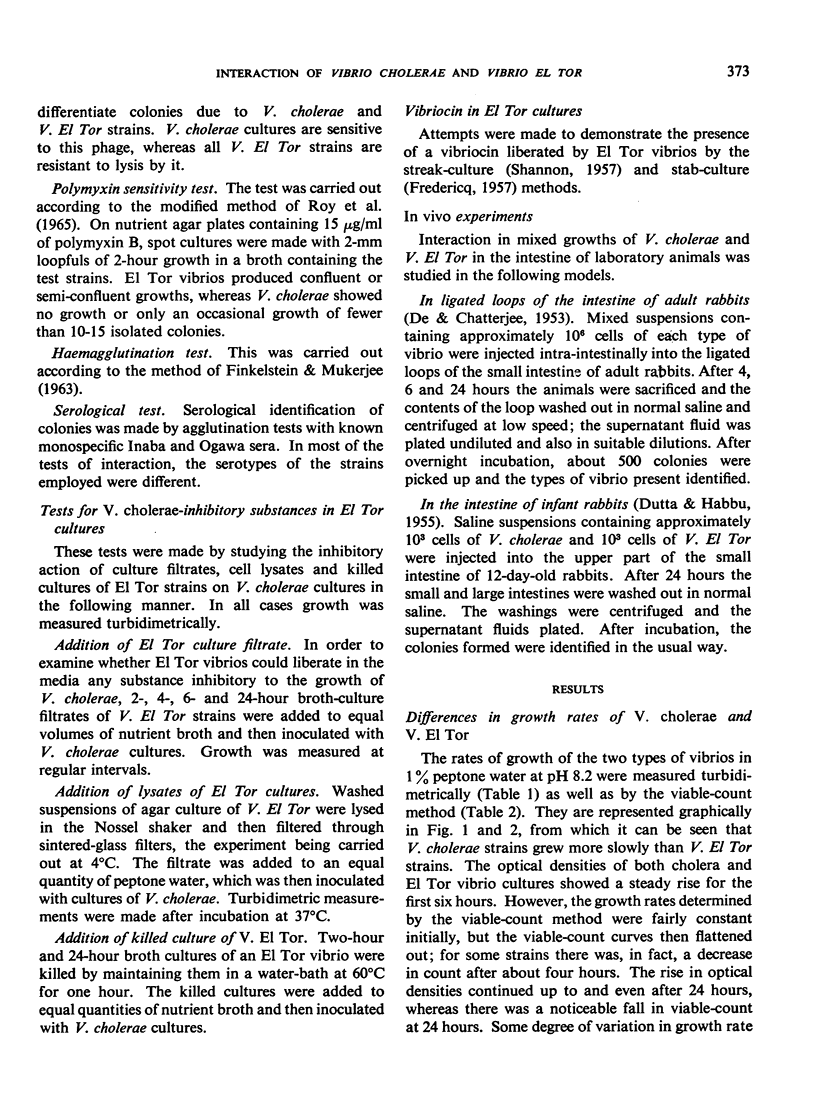
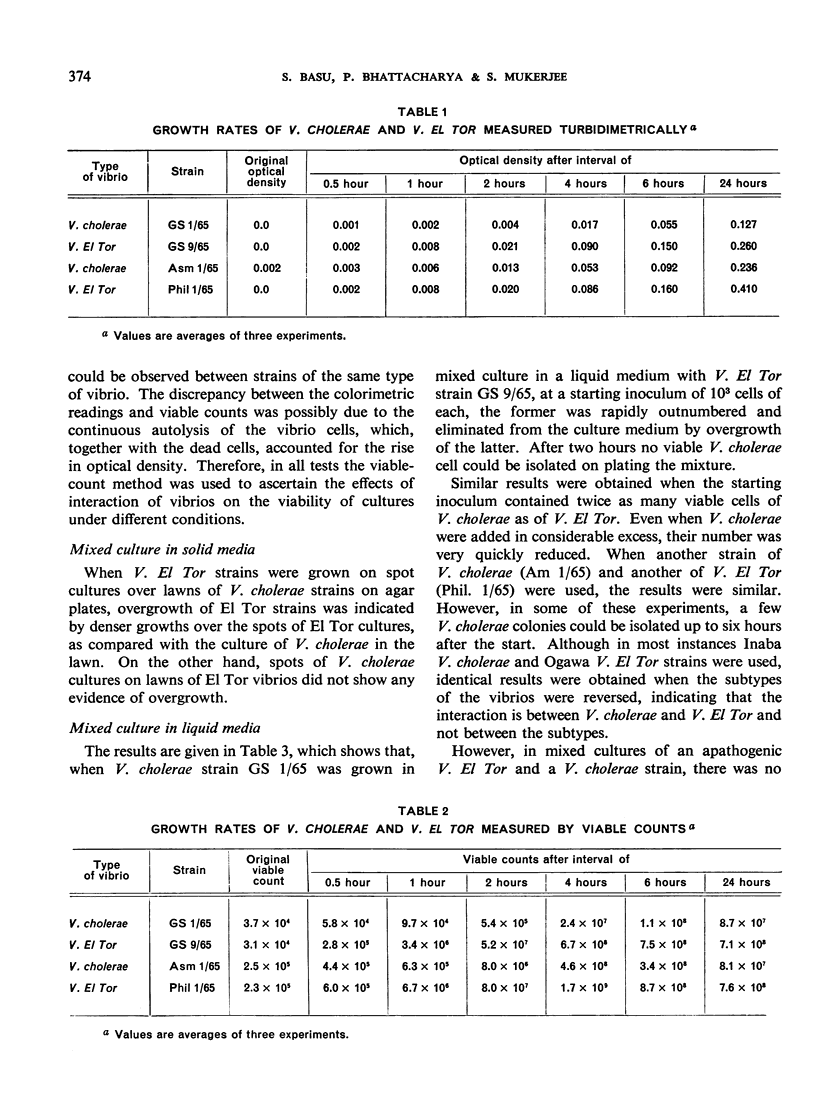
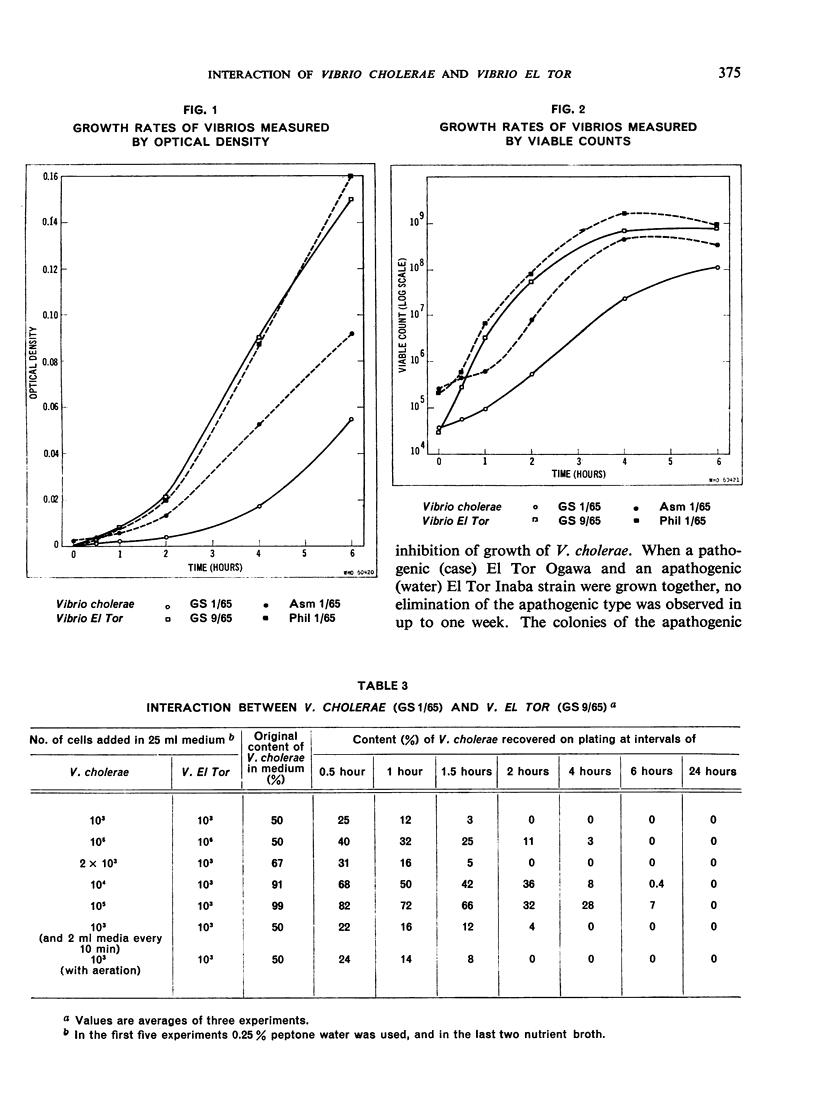
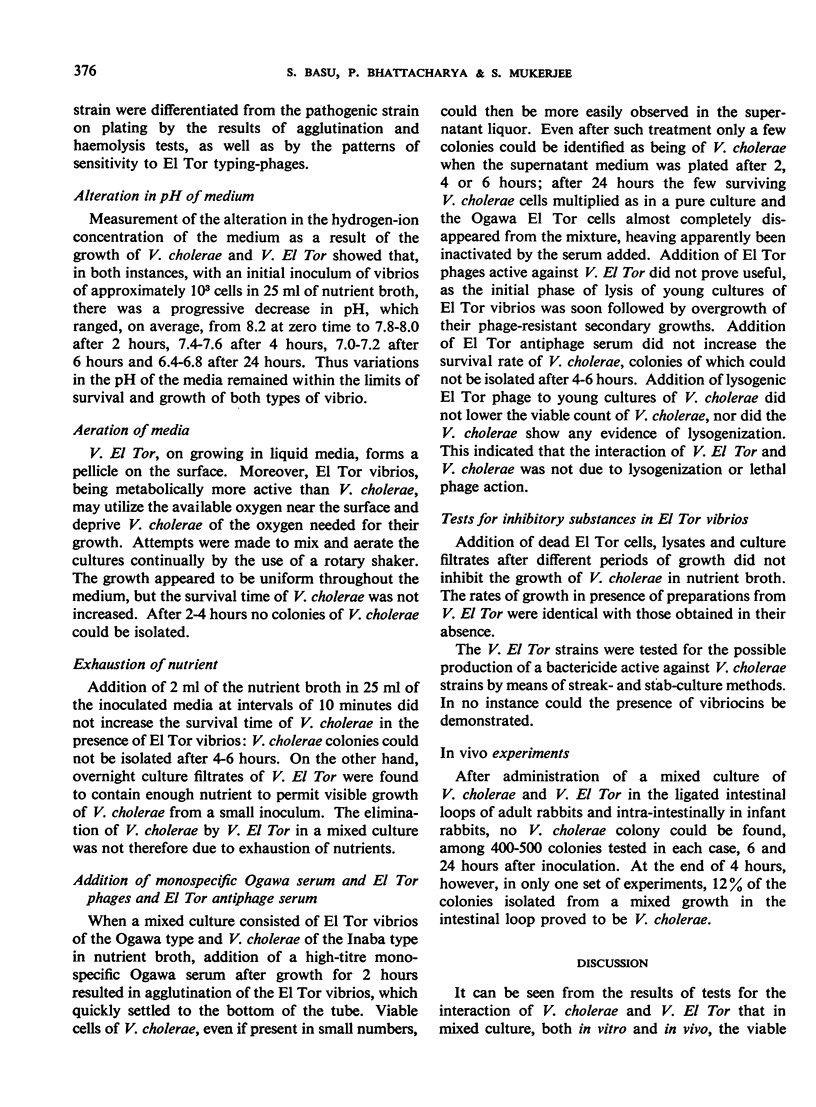
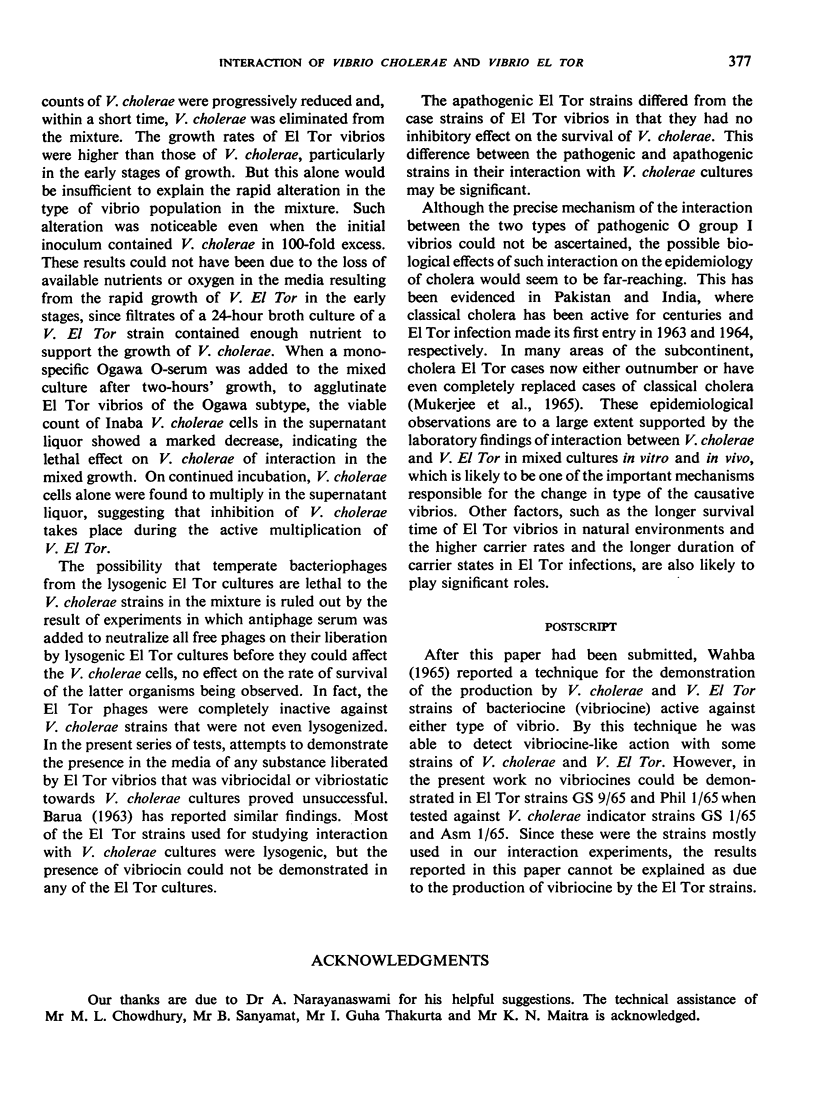
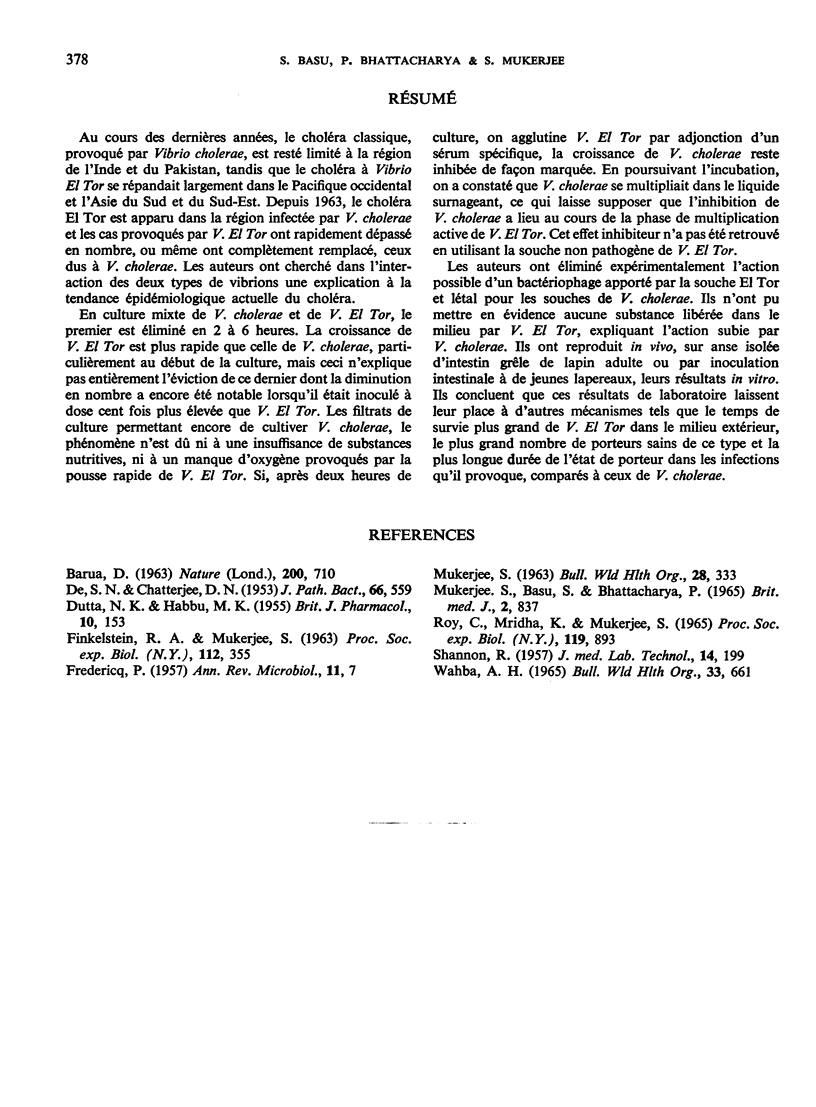
Selected References
These references are in PubMed. This may not be the complete list of references from this article.
- BARUA D. VIBRIO CHOLERAE AND COLICINES. Nature. 1963 Nov 16;200:710–711. doi: 10.1038/200710a0. [DOI] [PubMed] [Google Scholar]
- DE S. N., CHATTERJE D. N. An experimental study of the mechanism of action of Vibriod cholerae on the intestinal mucous membrane. J Pathol Bacteriol. 1953 Oct;66(2):559–562. doi: 10.1002/path.1700660228. [DOI] [PubMed] [Google Scholar]
- DUTTA N. K., HABBU M. K. Experimental cholera in infant rabbits: a method for chemotherapeutic investigation. Br J Pharmacol Chemother. 1955 Jun;10(2):153–159. doi: 10.1111/j.1476-5381.1955.tb00074.x. [DOI] [PMC free article] [PubMed] [Google Scholar]
- FREDERICQ P. Colicins. Annu Rev Microbiol. 1957;11:7–22. doi: 10.1146/annurev.mi.11.100157.000255. [DOI] [PubMed] [Google Scholar]
- Mukerjee S., Basu S., Bhattacharya P. A new trend in cholera epidemiology. Br Med J. 1965 Oct 9;2(5466):837–839. doi: 10.1136/bmj.2.5466.837. [DOI] [PMC free article] [PubMed] [Google Scholar]
- ROY C., MRIDHA K., MUKERJEE S. ACTION OF POLYMYXIN OF CHOLERA VIBRIOS. TECHNIQUES OF DETERMINATION OF POLYMYXIN-SENSITIVITY. Proc Soc Exp Biol Med. 1965 Jul;119:893–896. doi: 10.3181/00379727-119-30329. [DOI] [PubMed] [Google Scholar]
- SHANNON R. Colicine production as a method for typing Bact. coli 055 B5. J Med Lab Technol. 1957 Oct;14(4):199–214. [PubMed] [Google Scholar]
- Wahba A. H. Vibriocine production in the cholera and El Tor vibrios. Bull World Health Organ. 1965;33(5):661–664. [PMC free article] [PubMed] [Google Scholar]


